Faucet leaks are a common household issue, primarily caused by the following reasons:
Method1
Preliminary Steps
Turn off hut off the water supply to your faucet.

Check under your sink for the water supply lines leading to the handles. Identify the valves where these pipes connect
to the wall and turn them counterclockwise until they are fully closed. This will stop the water flow and help prevent any spills.
Seal the drain to prevent losing any small components.
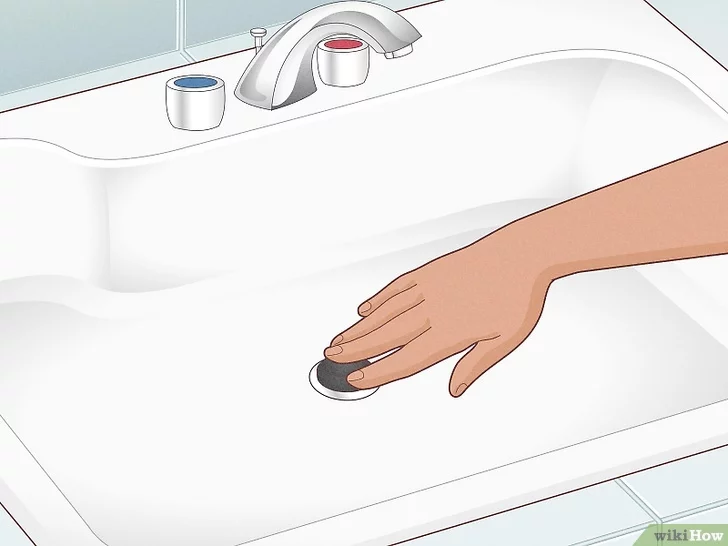
If you have a sink plug, use that. If not, stuff a rag into the drain to block it.
There’s nothing worse than watching a crucial screw or washer slip down the drain after you accidentally drop it.
Identify the type of faucet you have.

While there are many styles available, there are essentially four main types of faucet assemblies. Understanding which type you have is crucial for determining the appropriate repair method, so make sure to do this first. You might need to disassemble your faucet to figure it out.
- Compression faucet is the simplest type, using a small stem that moves up and down to control water flow. Many budget-friendly faucets are of this style.
- Ball faucet features a ball bearing and typically has a single handle that you can move left or right to adjust the temperature of the water.
- Cartridge faucet includes a cartridge that rotates to control water flow. The materials of the cartridge can vary, and these faucets often have a decorative cap on the handle. Most upscale faucets utilize cartridges.
- Ceramic-disk faucet has one or two ceramic cylinders that rotate to allow water to flow. High-end faucets with a single handle located on the side (rather than the back) are usually ceramic-disk faucets.
Method 2
Compression Faucet
1. Use a screwdriver and gentle force to remove each handle
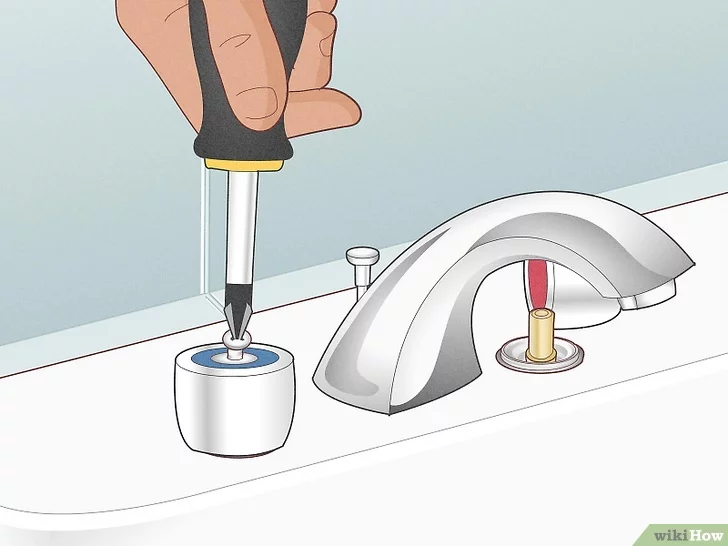
If there’s a decorative cap, pry it off first. If you see screw slots, use the screwdriver to take out the fasteners, then remove the handles.
- If you’re only fixing one leaking handle, you don’t need to remove both.
- The decorative cap may indicate “hot” or “cold,” or it could simply cover a screw slot. Typically, less expensive compression faucets won’t have these caps.
2. Use a screwdriver and gentle force to remove each handle.
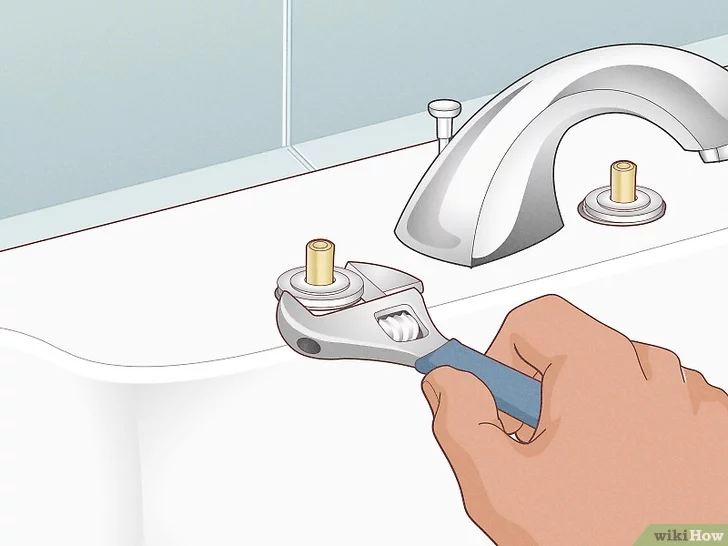
Beneath the handle, you’ll find a stem that rests on an O-ring, which in turn sits on a seat washer. The seat washer is typically made of rubber and can wear out over time. If your faucet is dripping, this is likely the source of the problem.
3. Remove the stem by pulling it out with your hands or using a wrench.

If it doesn’t budge when you twist or pull, use a wrench to pry it out or unscrew it. This will reveal the O-ring, which is thinner, and the seat washer, which is thicker. If the handles are leaking, replace the O-ring. Take the old O-ring to the hardware store to find a suitable replacement.
After replacing the O-ring, reassemble the faucet handle and test the water.
4. Take out the seat valve washer, which is the brass screw located upside down
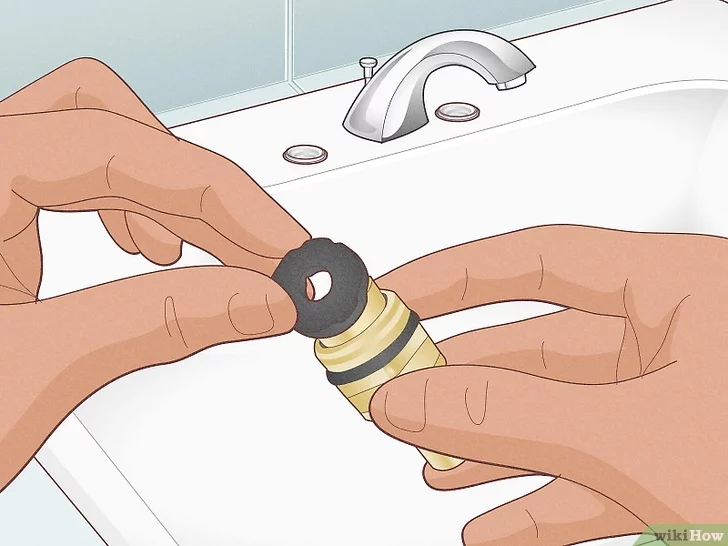
You can either unscrew it by hand or use a wrench to loosen and remove it. If your faucet is leaking, this is likely the primary cause.
5. Replace the seat washer with an identical one, as these washers are not universal.

Bring the old washer with you to the hardware store to find a suitable replacement. If you can’t locate one, reach out to your faucet’s manufacturer to order it directly.
Before reinstalling the new washer in the valve, apply a coat of plumber’s grease. If you prefer, you can use petroleum jelly instead.
6. Reassemble each handle and verify your work

Put everything back together in the reverse order of disassembly, tightening any screws or fasteners you removed. Then, turn the water on and let it run for a few minutes to flush out any debris. Minor leaks should now be resolved.
If you do notice any leaks, double-check that you installed the O-ring and seat washer correctly. If the leak persists, you may need to replace the entire faucet.
Method 3
Ball Faucet
1. Purchase a replacement kit for your ball faucet

as these faucets have multiple components that may need replacing. They also require special tools. You won’t have to replace the entire faucet – just the faucet cam assembly. Most kits, priced around $20, include all the necessary parts and tools.
Ensure you select a kit that specifically states compatibility with your faucet’s brand and model.
2. Unscrew the handle and take it off, then set it aside.

You might need to remove a small fastener that secures the lever on top of the ball cap. After that, gently pop off the spout and handle.
3. Use pliers to take off the cap and collar.

Next, loosen the faucet cam, which is the threaded component on top of the entire valve assembly. Your replacement kit should include a specific tool for this, so be sure to follow the instructions that came with it.
Remove the faucet cam, washer, and ball. This assembly resembles a “ball and socket” joint in the body, with a movable (usually white) rubber ball that plugs the socket to control the water flow.
4. Remove the inlet seals and springs

Use needle-nose pliers to reach inside the faucet body and carefully pull out the small seals and springs. Take note of how these components are attached to the valve, as this will assist you during the reassembly of your faucet.
5. Replace the O-rings by sliding them on by hand.

First, cut off the old O-ring, then coat the new one in plumber’s grease. Slide the new O-ring onto the assembly in the same spot where the old one was located.
In most cases, the O-ring is the primary cause of the leak. If you prefer, you can use petroleum jelly instead of plumber’s grease.
6. Install the new springs, valve seats, and cam washers.

These components should be included in your kit and will follow the reverse order of the disassembly process. Wherever you removed a spring or washer, install a replacement.
While the O-ring is likely the main culprit, replacing the springs and other components will help prevent the need for future replacements.
7. Reassemble the handle and test your work.

The leak should now be fixed, but it’s a good idea to double-check. Turn the water on and let it run for a few minutes to flush out any debris. Afterward, inspect under the sink and around the faucet to ensure there are no leaks.
Method 4
Cartridge Faucet
1. Remove the handle to access the valve underneath.
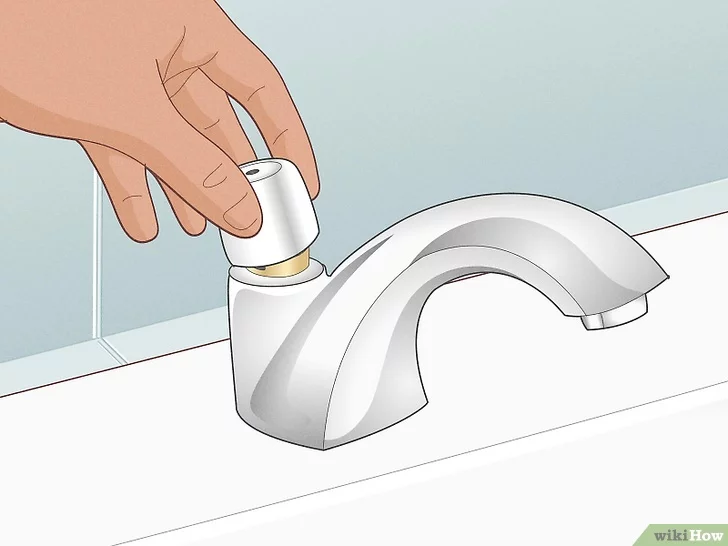
If there’s a decorative cap, pry it off first. Next, look for a small opening on each handle where the screw is located. Use a small screwdriver to unscrew the fastener, then take off the handles.
If you don’t find any screw slots, try gently prying the handle up by hand or twisting it “backwards” until it comes off.
2. Remove the retaining clip if needed.

In certain models, a retaining clip secures the cartridge in place. This clip is typically a circular, threaded piece made of plastic. Use pliers to carefully pry it off the cartridge.
3. Pull the cartridge out or stand it upright.

The cartridge may come out easily, but if it doesn’t, pull it upward until you hear a click. This indicates the position the cartridge occupies when the water is at full blast.
4. Remove the faucet spout if the cartridge doesn’t come out.

Slide the spout upward to detach it from the cartridge and set it aside. Then, locate the O-rings at the base of the cartridge.
5. Replace the O-rings or swap out the cartridge entirely.

- If your cartridge appears undamaged and is still inside the faucet opening, simply clean it with a damp cloth and replace the O-ring. However, if the cartridge looks damaged or excessively old, buy a replacement and install it in the opening.
The cartridge will click into place when you insert it, and there’s only one way for it to fit, so you can’t go wrong. Be sure to purchase a replacement cartridge specifically designed for your faucet brand and model.
6. Reassemble the handle and confirm everything works.
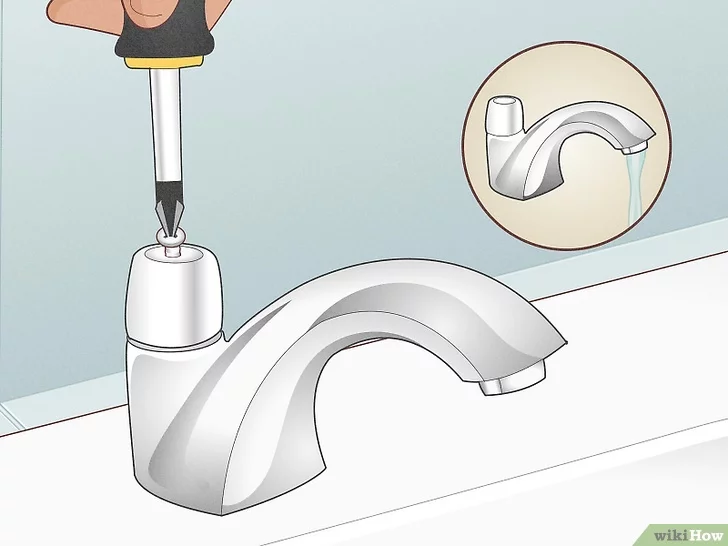
The leak should now be fixed. Place the handle back over the cartridge, reinstall the retaining clip if there was one, and turn the water back on to ensure everything functions smoothly.
Method 5
Ceramic-Disk Faucet
1. Remove the handle and take off the escutcheon cap.
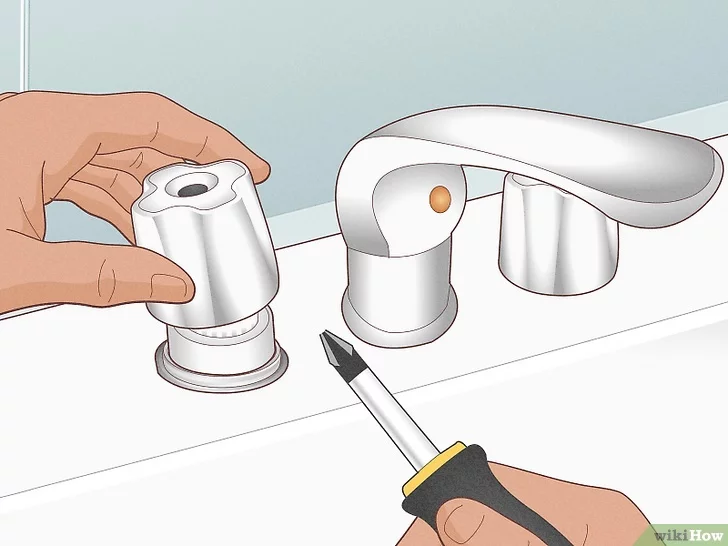
Unscrew the handle by turning it counterclockwise until it loosens, or by removing the fastener that secures the handle. Locate the escutcheon, which is typically made of metal and sits directly beneath the handle. Lift the escutcheon off to expose the cylinders underneath.
2. Unscrew and remove the disk cylinder.

Each ceramic-disk faucet may vary, but generally, you’ll use a screwdriver to loosen the retainer nut or mounting screw that secures the disk cylinder. Once loosened, lift the cylinder out of the faucet opening.
If your faucet has multiple disk cylinders, remove all of them while noting the arrangement of each on top of one another.
3. Pry out the seals and clean the cylinders.

- White vinegar is effective for this, especially if you have hard water. Soak the disk(s) in vinegar for 2-3 hours to help dissolve any buildup, then evaluate whether they are still reusable.
Trust your instincts with the disks; if they appear worn or damaged, it’s likely time to replace them.
4. Replace the seals or the cylinder disk if they appear damaged.

If the seals are pitted, frayed, thin, or otherwise worn but the disk looks fine, just take the seals to a home improvement store to buy replacements. If the disk is also damaged, purchase a new disk specifically designed for your faucet model.
5. Reassemble the handle and turn the water on.

Once everything is in place, put the handle back on, secure it, and then turn the water supply back on to check for leaks and ensure everything is functioning properly.


